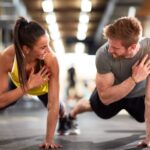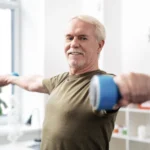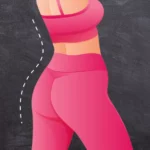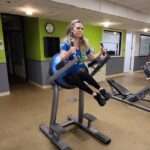I love at-home workouts. They are practical and time-saving, and you don’t spend any money. Personally, my favorite exercises are glute workouts. The gluteal muscles are key to your body’s strength and stability, playing a crucial role in posture, mobility, and athletic performance.
In this article, we’ll explore 10 effective side glute workouts that you can do at home. These workouts are simple yet powerful, designed to strengthen, tone, and enhance the functionality of your glute muscles.
Our Top 10 Workouts
- Side Leg Raises
- Clamshells
- Fire Hydrants
- Side Plank with Leg Lift
- Curtsy Lunges
- Single-Leg Glute Bridge
- Lateral Band Walks
- Side Squats
- Lateral Leg Extensions
- Donkey Kicks
1. Side Leg Raises
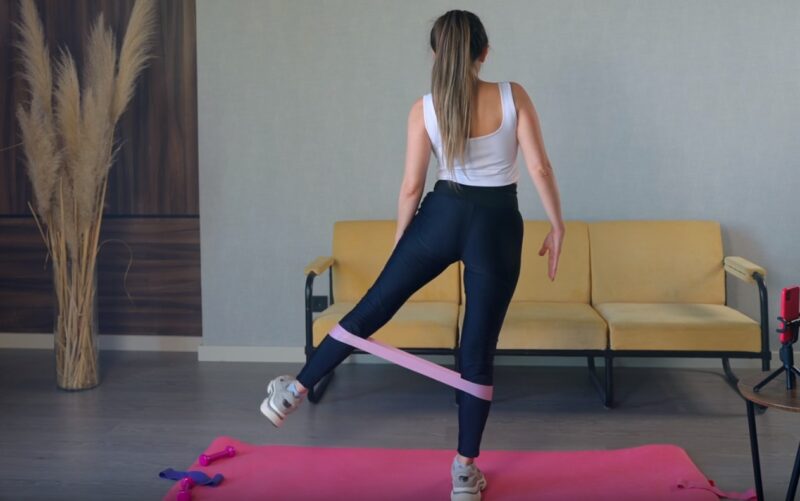
Side leg raises target your gluteus medius and minimus. These muscles are often overlooked but are essential for hip stabilization and preventing knee and back pain. Regularly performing this exercise can improve the shape and tone of your side glutes, contributing to better body symmetry and posture.
Personally, I found side leg raises to be challenging initially, particularly in maintaining proper form without rotating the hip, but they became more manageable with practice and greatly improved my lateral stability.
How to Perform
- Lie on your side with legs stacked and straight.
- Support your head with your lower arm and stabilize your body with your top hand.
- Raise your top leg as high as you can without rotating your hip. Keep your foot parallel to the ground.
- Slowly lower it back down.
- Repeat for 10-15 reps before switching sides.
2. Clamshells
Clamshells effectively target the outer glutes, crucial for hip stabilization and supporting the pelvis. This is particularly beneficial for runners and athletes. This exercise can also alleviate lower back pain by strengthening the muscles around the hip, thereby improving overall alignment and balance.
I had a big problem with discomfort in my lower back, as I spend a lot of time sitting at work. After consistently including these in my routine, I noticed a significant pain reduction.
How to Perform
- Lie on your side with knees bent at a 90-degree angle, and feet together.
- Keeping your feet together, raise your top knee as high as possible without shifting your hips.
- Pause at the top, then slowly lower it back down.
- Perform 10-15 reps on each side.
3. Fire Hydrants
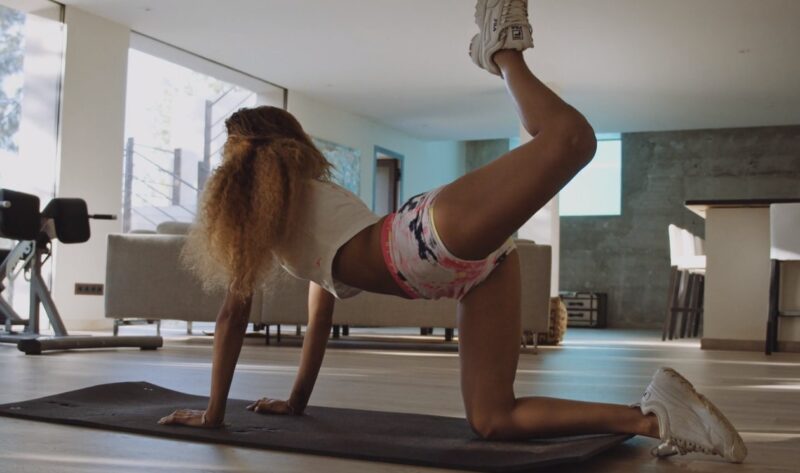
This exercise is great for enhancing hip mobility while simultaneously strengthening the gluteus maximus, medius, and minimus. This multi-muscle engagement is key to functional fitness.
They also contribute to improving your core stability, as maintaining balance during this exercise requires a strong core. For those looking to further challenge their core and enhance abdominal strength, incorporating exercises like the Captain’s Chair can be a valuable addition to your routine.
At first, I struggled with maintaining my balance and not tilting my torso, but over time, I could see a noticeable improvement in my core strength and hip flexibility.
How to Perform
- Start on all fours, with hands under shoulders and knees under hips.
- Keeping your knee bent, lift one leg out to the side, keeping your hip stable.
- Lift as high as possible without tilting your torso.
- Slowly return to the starting position.
- Do 10-15 reps on each side.
4. Side Plank with Leg Lift
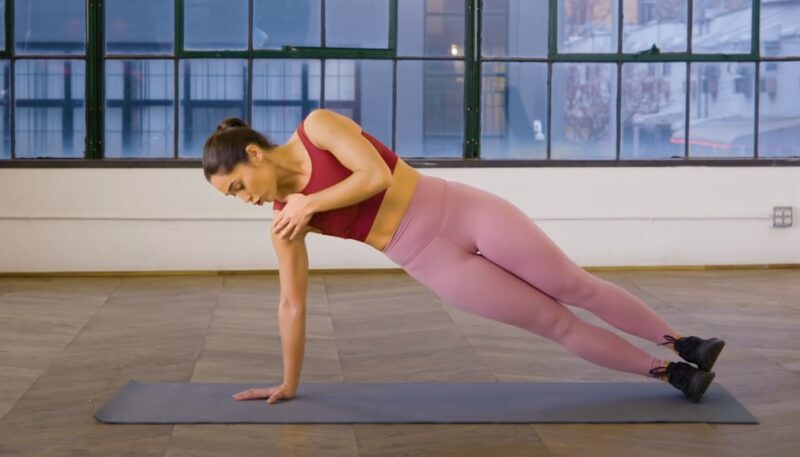
The side plank with leg lift is a comprehensive exercise that not only targets the glutes but also engages the core muscles, enhancing overall body strength and balance. This exercise is highly effective in building side glute strength and improving the stability of the hips and lower back, which is essential for postural support.
Maintaining a straight body line while lifting the leg can be quite challenging at first. However, regular practice significantly improves balance and core strength.
How to Perform
- Start in a side plank position, balancing on one forearm and the side of one foot.
- Stack your legs, then lift the top leg up as high as you can.
- Hold for a few seconds, then lower it back down without breaking the plank.
- Perform 8-10 reps, then switch sides.
5. Curtsy Lunges
Curtsy lunges are excellent for targeting the gluteus medius, which is vital for lateral movement and hip stability. They also engage the thigh muscles, providing a well-rounded lower-body workout. This exercise can greatly enhance your lower body’s strength and flexibility, improving your functional movements like bending and twisting.
Incorporating these exercises into a routine that includes other key habits for a healthy lifestyle, such as quality sleep and balanced nutrition, can lead to even more significant improvements in your overall well-being.
I initially found the diagonal movement pattern of curtsy lunges a bit awkward, but it became more fluid over time, greatly enhancing my lateral agility and coordination.
How to Perform
- Stand with your feet hip-width apart.
- Step one foot diagonally behind you and lower into a lunge.
- Your front knee should be aligned with your front ankle.
- Push through your front heel to return to the starting position.
- Do 10-12 reps on each side.
6. Single-Leg Glute Bridge
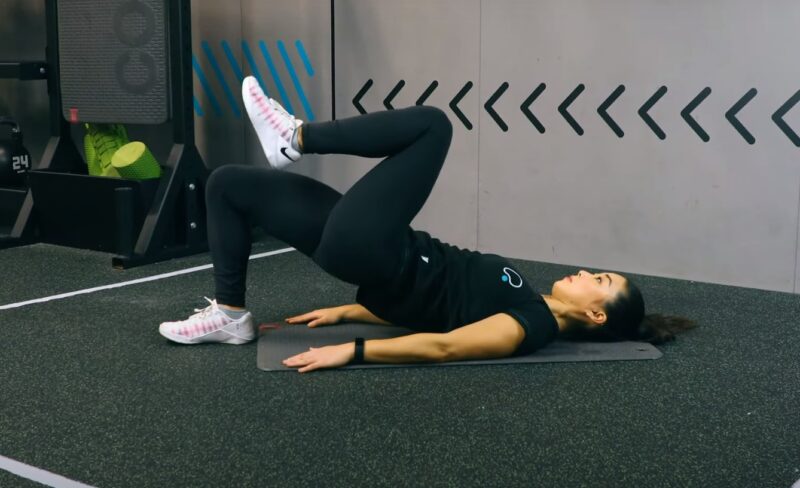
This exercise primarily focuses on the gluteus maximus, the largest muscle in the body, promoting strength and size development. It’s an excellent exercise for improving pelvic stability and reducing the risk of injuries in the lower back and knees.
When I first attempted this, balancing on one leg while lifting my hips was pretty clumsy, but it significantly improved my pelvic stability and unilateral strength, which was beneficial for other athletic activities.
How to Perform
- Lie on your back with your knees bent and feet flat on the floor.
- Extend one leg out.
- Push through your heel on the floor, lifting your hips toward the ceiling.
- Lower your hips back down and repeat.
- Do 10-15 reps on each leg.
7. Lateral Band Walks
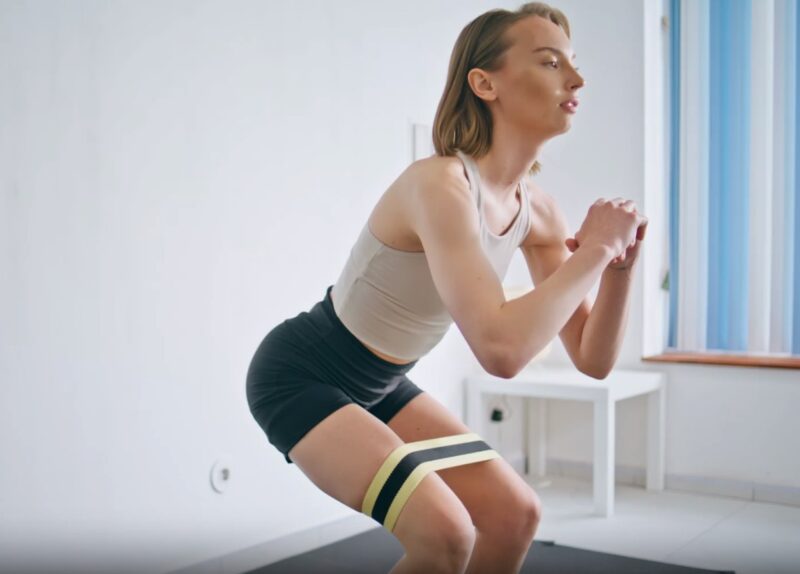
This exercise is excellent for activating the side glutes and improving hip stability. Lateral Band Walks also enhance the endurance and strength of the lower body, particularly beneficial for athletes who require lateral movement.
Maintaining constant tension in the band can be difficult in the beginning, but you’ll make it work, don’t worry.
How to Perform
- Place a resistance band just above your knees.
- Stand with feet hip-width apart, knees slightly bent.
- Step to the side while keeping tension in the band.
- Take small steps, then step back in the opposite direction.
- Continue for 10-15 steps in each direction.
8. Side Squats
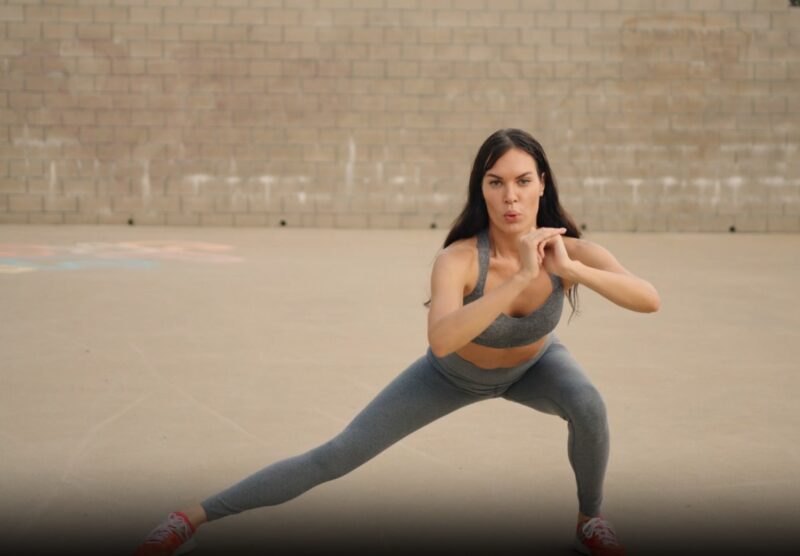
Side squats are a dynamic way to work the gluteus medius and the adductor muscles of the thigh, enhancing lateral strength and mobility. The exercise is particularly effective in building functional strength, which is crucial for movements involving side-to-side motion.
How to Perform
- Stand with your feet together.
- Step out to the side and lower into a squat, pushing your hips back.
- Keep your weight on your heels.
- Push back up to the starting position.
- Alternate sides for 10-15 reps each.
9. Lateral Leg Extensions
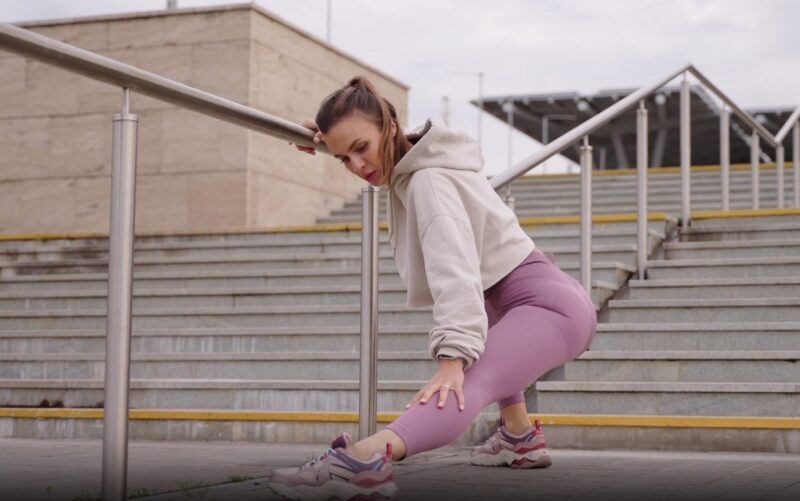
Firstly, lateral leg extensions are great for targeting the outer thighs and glutes. After consistent practice, I noticed a significant improvement in muscle tone and strength in these areas.
This exercise not only enhances the appearance of the thighs and glutes but also contributes to better stability and balance.
How to Perform
- Attach an ankle weight or a resistance band to your ankle.
- Stand with your feet hip-width apart, holding onto a chair for balance.
- Extend one leg out to the side as far as possible.
- Hold briefly, then return to the starting position.
- Perform 10-15 reps on each side.
10. Donkey Kicks
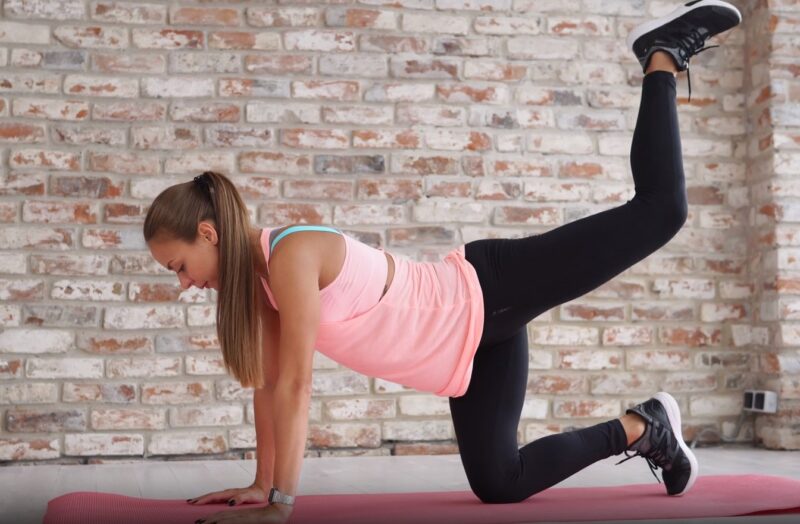
Donkey kicks are a personal favorite when it comes to toning gluteus. They specifically target the gluteus maximus, which is the largest muscle in the buttock area.
I can assure you that regularly performing this exercise will make a noticeable difference in the shape and firmness of your buttocks. It’s an excellent way to sculpt and strengthen the area.
How to Perform
- Start on all fours, with your hands under your shoulders and knees under your hips.
- Keeping your knee bent, lift one leg back and up towards the ceiling.
- Squeeze your glutes at the top of the movement.
- Slowly lower back down and repeat.
- Do 10-15 reps on each side.
FAQs
Can these side glute exercises help in reducing hip dips?
Yes, workouts like side leg raises and lateral leg extensions can help in filling out hip dips. They target muscles around the hips, potentially leading to a more rounded hip appearance.
It’s important to note that hip dips are also influenced by bone structure, and these workouts may not completely eliminate them.
How often should I perform these exercises for optimal results?
For optimal results, incorporate these workouts into your routine 2-3 times per week. This allows sufficient recovery time for muscle growth and strength development. Consistency is key to seeing improvements.
Are there any modifications for beginners who find some of these workouts too challenging?
Absolutely! Beginners can modify these by reducing the range of motion or number of repetitions. For instance, in the side plank with a leg lift, start by holding a basic side plank before adding the leg lift.
Similarly, use lighter resistance bands or no equipment at all when starting with lateral band walks or leg extensions.
Is it necessary to use weights or resistance bands for these workouts?
While weights and resistance bands can enhance the effectiveness of these exercises by adding resistance, they are not absolutely necessary. You can perform most of these workouts using just your body weight and still experience benefits in strength and toning.
Can these exercises help in alleviating knee pain?
Yes, several of these workouts, like clamshells and side leg raises, can help strengthen the muscles around the hips and thighs, which can lead to better knee alignment and reduced knee pain.
However, if you have existing knee issues, it’s recommended to consult a healthcare professional before starting any new exercise routine.
For how long should I continue these workouts to see visible results?
The time it takes to see visible results varies depending on individual fitness levels, consistency, and diet. Generally, you might start noticing improvements in muscle tone and strength within 4 to 6 weeks of consistent exercise. For more significant changes, it might take a few months of regular workouts.
The Bottom Line
These 10 side glute exercises offer a diverse and effective way to strengthen and tone the gluteal muscles right from the comfort of your home. Whether it’s enhancing posture, improving mobility, or just working towards a stronger, more sculpted lower body, these workouts cater to various fitness needs.
Always keep in mind that consistency is key, along with proper form and gradual progression. By incorporating these exercises into your routine, you can expect to see noticeable improvements in the strength, stability, and overall functionality of your glutes.

